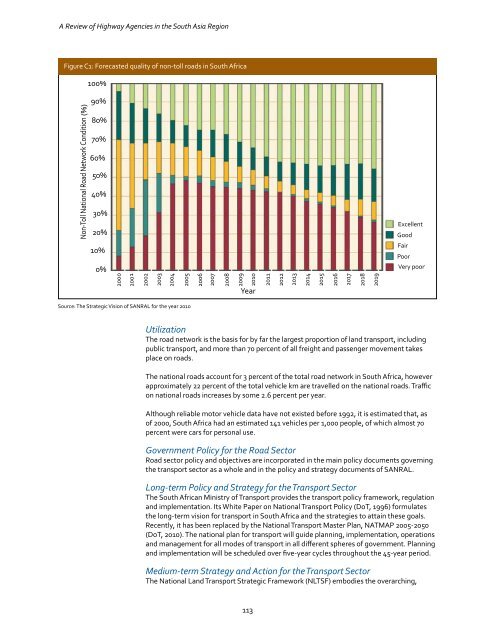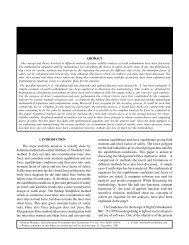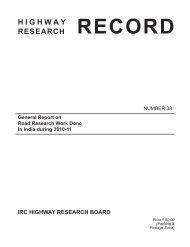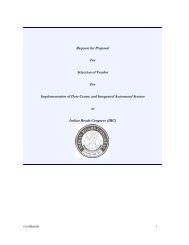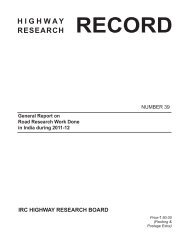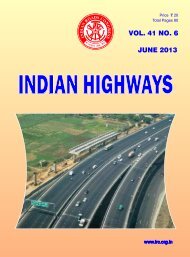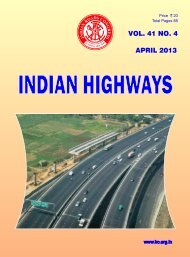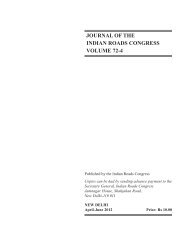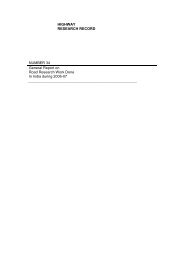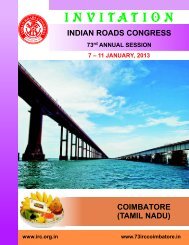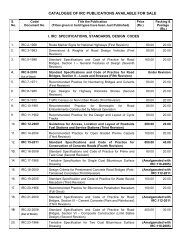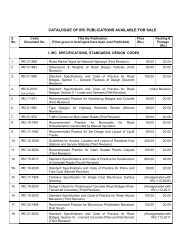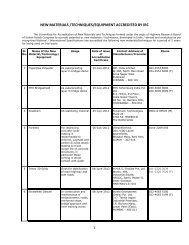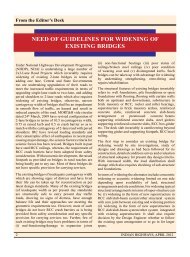A Review of Highway Agencies in the South Asia Region
A Review of Highway Agencies in the South Asia Region
A Review of Highway Agencies in the South Asia Region
You also want an ePaper? Increase the reach of your titles
YUMPU automatically turns print PDFs into web optimized ePapers that Google loves.
A <strong>Review</strong> <strong>of</strong> <strong>Highway</strong> <strong>Agencies</strong> <strong>in</strong> <strong>the</strong> <strong>South</strong> <strong>Asia</strong> <strong>Region</strong><br />
Figure C1: Forecasted quality <strong>of</strong> non-toll roads <strong>in</strong> <strong>South</strong> Africa<br />
Source: The Strategic Vision <strong>of</strong> SANRAL for <strong>the</strong> year 2010<br />
Utilization<br />
The road network is <strong>the</strong> basis for by far <strong>the</strong> largest proportion <strong>of</strong> land transport, <strong>in</strong>clud<strong>in</strong>g<br />
public transport, and more than 70 percent <strong>of</strong> all freight and passenger movement takes<br />
place on roads.<br />
The national roads account for 3 percent <strong>of</strong> <strong>the</strong> total road network <strong>in</strong> <strong>South</strong> Africa, however<br />
approximately 22 percent <strong>of</strong> <strong>the</strong> total vehicle km are travelled on <strong>the</strong> national roads. Traffic<br />
on national roads <strong>in</strong>creases by some 2.6 percent per year.<br />
Although reliable motor vehicle data have not existed before 1992, it is estimated that, as<br />
<strong>of</strong> 2000, <strong>South</strong> Africa had an estimated 141 vehicles per 1,000 people, <strong>of</strong> which almost 70<br />
percent were cars for personal use.<br />
Government Policy for <strong>the</strong> Road Sector<br />
Road sector policy and objectives are <strong>in</strong>corporated <strong>in</strong> <strong>the</strong> ma<strong>in</strong> policy documents govern<strong>in</strong>g<br />
<strong>the</strong> transport sector as a whole and <strong>in</strong> <strong>the</strong> policy and strategy documents <strong>of</strong> SANRAL.<br />
Long-term Policy and Strategy for <strong>the</strong> Transport Sector<br />
The <strong>South</strong> African M<strong>in</strong>istry <strong>of</strong> Transport provides <strong>the</strong> transport policy framework, regulation<br />
and implementation. Its White Paper on National Transport Policy (DoT, 1996) formulates<br />
<strong>the</strong> long-term vision for transport <strong>in</strong> <strong>South</strong> Africa and <strong>the</strong> strategies to atta<strong>in</strong> <strong>the</strong>se goals.<br />
Recently, it has been replaced by <strong>the</strong> National Transport Master Plan, NATMAP 2005-2050<br />
(DoT, 2010). The national plan for transport will guide plann<strong>in</strong>g, implementation, operations<br />
and management for all modes <strong>of</strong> transport <strong>in</strong> all different spheres <strong>of</strong> government. Plann<strong>in</strong>g<br />
and implementation will be scheduled over five-year cycles throughout <strong>the</strong> 45-year period.<br />
Medium-term Strategy and Action for <strong>the</strong> Transport Sector<br />
The National Land Transport Strategic Framework (NLTSF) embodies <strong>the</strong> overarch<strong>in</strong>g,<br />
113


